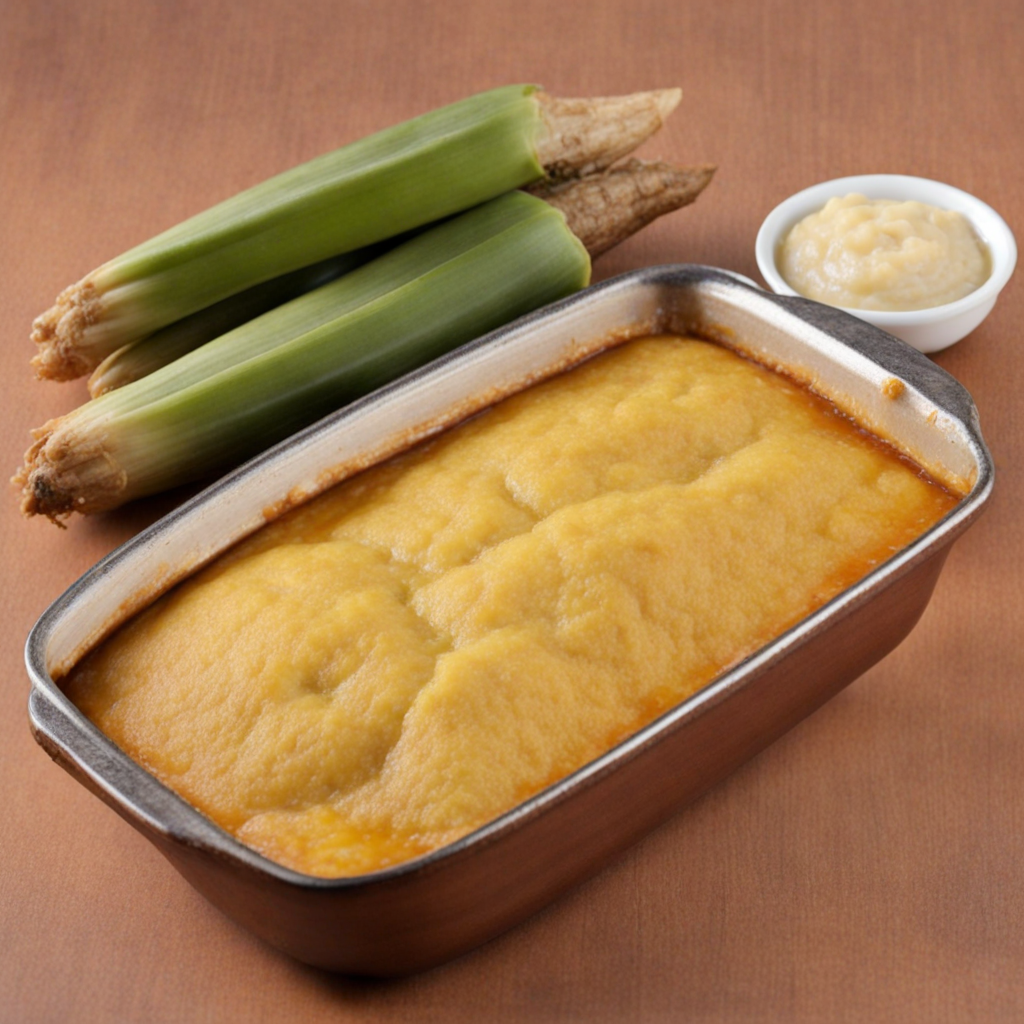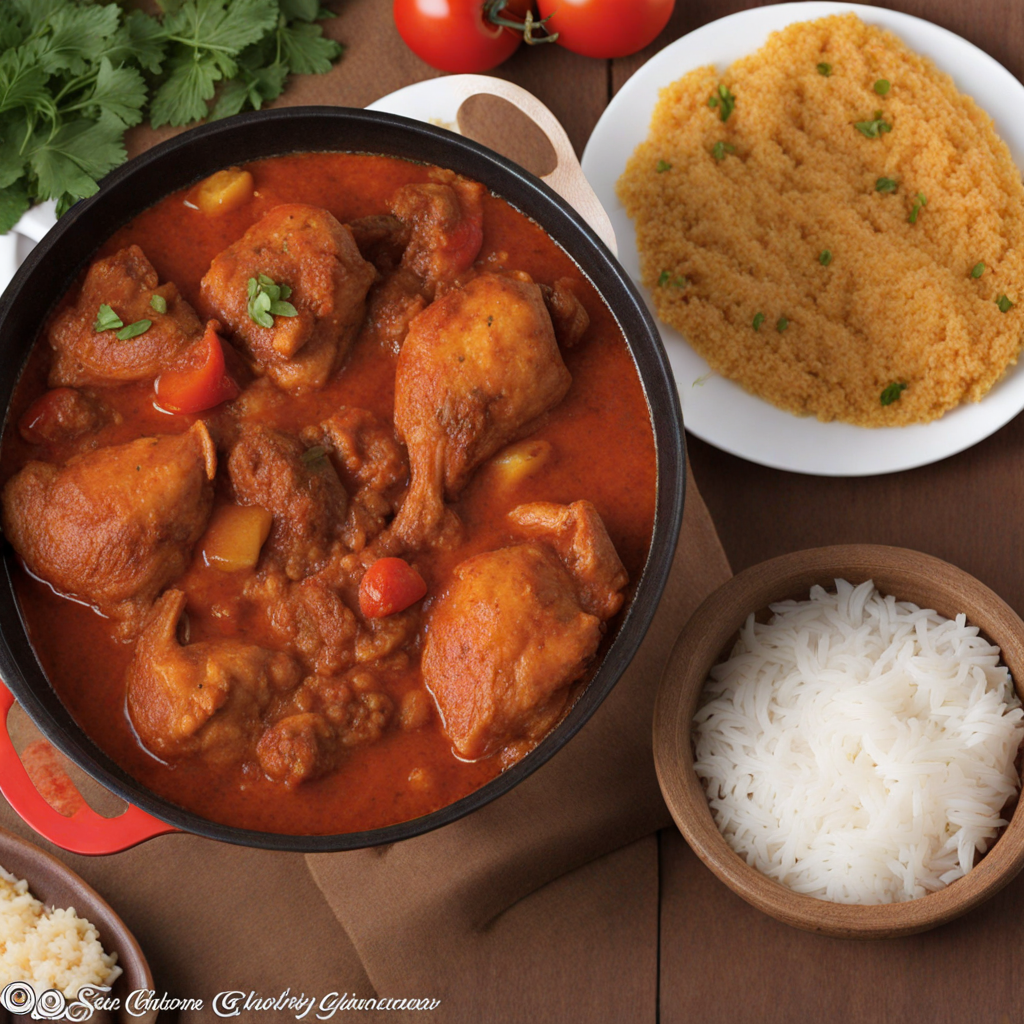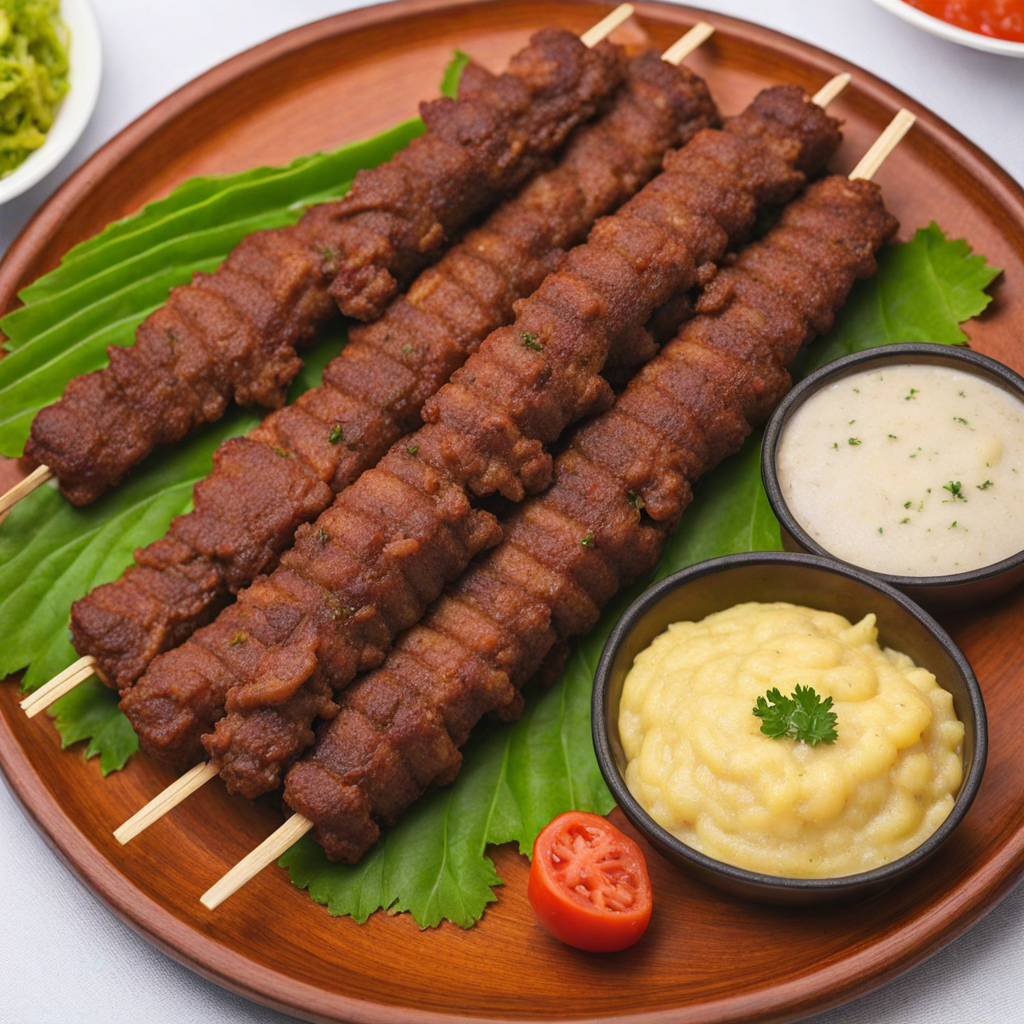Ghanaian Sausage
Ghanaian sausage, often referred to as "kebabs" or "kebabs" in local parlance, is a delightful culinary creation that embodies the vibrant flavors of Ghana. Typically made from minced meat, which can range from beef, chicken, or pork, these sausages are seasoned with an array of spices that reflect the rich culinary heritage of the country. Common spices include ginger, garlic, and a blend of local peppers that add a distinct heat and depth of flavor. The mixture is often enhanced with finely chopped onions and sometimes herbs like thyme, resulting in a luscious filling that is both savory and aromatic. Once seasoned, the meat mixture is molded onto skewers and grilled to perfection, allowing the smoky flavor from the grill to infuse the sausages. The grilling process not only cooks the meat but also caramelizes the spices, creating a tantalizing crust that contrasts beautifully with the juicy interior. Traditionally, these sausages are enjoyed as street food, served hot and often accompanied by spicy pepper sauce or a tangy dipping sauce made from tomatoes and onions. The combination of the smoky, spicy, and savory elements creates a mouthwatering experience that is both satisfying and unforgettable. Ghanaian sausage is more than just a meal; it's a social experience, often enjoyed during gatherings, parties, or festivals. The sausages can be served alongside fried plantains, jollof rice, or a simple salad, making them a versatile dish that caters to various palates. Whether you're biting into the crispy exterior or savoring the rich and flavorful filling, each bite transports you to the bustling streets of Accra, where the aroma of grilling meats fills the air. This culinary gem is a must-try for anyone looking to explore the diverse and delicious flavors of Ghana.
How It Became This Dish
The History of Ghanaian Sausage: A Culinary Journey #### Origins: A Melting Pot of Cultures Ghanaian sausage, known locally as "kebabs" or "sausage," is a delightful culinary creation that reflects the rich tapestry of Ghana’s history, culture, and diverse influences. The origins of this savory treat can be traced back to a blend of indigenous traditions and external influences brought by traders and colonizers over centuries. The earliest forms of sausage can be linked to the natural preservation methods used by ancient peoples. In Ghana, various forms of meat preservation, such as drying and smoking, were practiced long before the introduction of European-style sausages. The indigenous people of the region utilized local game, fish, and livestock, combining them with spices and herbs to enhance flavor and longevity. As trade routes expanded, especially during the trans-Saharan trade, new ingredients and spices entered the Ghanaian culinary landscape. This included the introduction of chili peppers, garlic, and various seasonings that would eventually shape the flavor profile of modern Ghanaian sausages. The influence of neighboring cultures, particularly the Hausa from Nigeria and the Berbers from North Africa, played a crucial role in shaping the way meat was handled and prepared. #### Cultural Significance: More Than Just Food Ghanaian sausage is more than just a dish; it is a cultural artifact that embodies the communal spirit of the Ghanaian people. It has become a staple at social gatherings, festivals, and family celebrations. The act of grilling sausages, often over open flames, serves as a communal activity that brings people together. Whether at a street vendor’s stall or during a family barbecue, the aroma of sausages sizzling on the grill evokes a sense of nostalgia and unity. The preparation of sausages in Ghana often involves a variety of meats, including beef, chicken, and goat, which are seasoned with local spices and herbs. This versatility allows for personal and regional variations, making each sausage a unique representation of the cook’s background. For instance, in the northern regions of Ghana, where the Hausa influence is pronounced, sausages are often seasoned with a blend of spices that reflect the local palate, while southern versions may incorporate more coastal flavors like fish. In traditional ceremonies, such as weddings and festivals, sausages play a significant role, often symbolizing wealth and prosperity. Sharing food is a fundamental aspect of Ghanaian culture, and the act of offering sausage to guests is a gesture of hospitality and goodwill. #### Development Over Time: Modern Influences and Innovations As Ghana embraced modernization in the late 20th and early 21st centuries, the sausage underwent significant transformations. Urbanization and the influx of Western culture introduced new processing techniques and flavors, leading to the emergence of commercially produced sausages. This shift was particularly evident in cities like Accra and Kumasi, where street food culture flourished. Street vendors began to offer a variety of sausages, often served on skewers and accompanied by spicy sauces or dips. This convenience made them popular among the busy urban population, leading to the proliferation of sausage stalls and food trucks. The integration of Western fast food concepts, such as hot dogs and burgers, also influenced the preparation and presentation of sausages in Ghana. Moreover, the rise of health consciousness has prompted many Ghanaians to explore healthier alternatives to traditional sausages. This has led to the development of chicken and turkey sausages, as well as vegetarian and even vegan options that cater to a more diverse audience. Local producers have started to experiment with ingredients like plant-based proteins and spices, creating innovative versions of the traditional sausage. #### Contemporary Trends: Fusion and Globalization In the age of globalization, Ghanaian sausage has begun to find its place on the international culinary stage. Chefs and food enthusiasts are increasingly experimenting with fusion cuisines, combining traditional Ghanaian flavors with international techniques. This has led to the creation of unique dishes that incorporate Ghanaian sausage into various global recipes, from pasta to tacos. Social media has played a pivotal role in popularizing Ghanaian sausage beyond its borders. Food bloggers and influencers showcase their culinary creations, inviting a wider audience to discover the flavors of Ghana. Virtual cooking classes and online recipe sharing have resulted in a burgeoning interest in Ghanaian cuisine, with sausages often taking center stage due to their versatility and appeal. Furthermore, the diaspora community has also contributed to the evolution of Ghanaian sausage. Ghanaians living abroad have sought to recreate the flavors of their homeland, leading to the establishment of specialty stores and restaurants that offer authentic Ghanaian sausages. This not only preserves cultural heritage but also introduces these flavors to new audiences, fostering a greater appreciation for Ghanaian cuisine. #### Conclusion: A Sausage Story The history of Ghanaian sausage is a story of resilience, adaptation, and cultural exchange. From its humble beginnings rooted in ancient preservation methods to its contemporary status as a beloved street food, the sausage reflects the dynamic nature of Ghanaian culinary traditions. It encapsulates the essence of community, hospitality, and innovation that defines Ghanaian culture. As Ghana continues to evolve, so too will its culinary landscape, with Ghanaian sausage standing as a testament to the country’s rich heritage and its ability to embrace change. Whether enjoyed at a bustling market stall or a festive gathering, Ghanaian sausage remains a delicious symbol of unity, flavor, and the enduring power of food to bring people together.
You may like
Discover local flavors from Ghana







